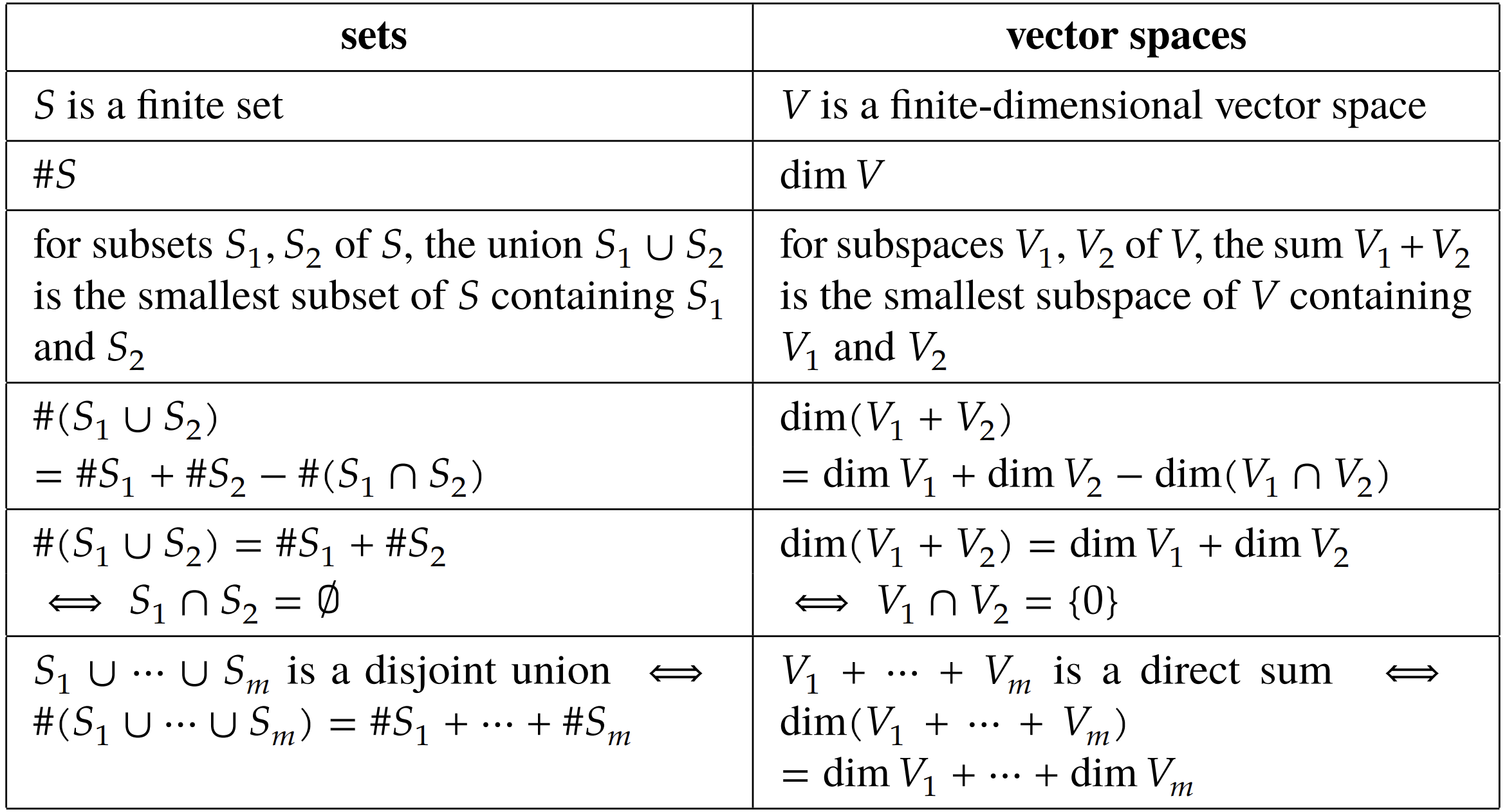Length of basis
Any two basis of a finite dimensional vector space have the same length. Proof:
- Let and be the basis of a vector space .
- Note that as basis, is a independent list, and is a spanning list, thus can not be of greater length than . Prove a similar result in the other direction to show that they have to be of the same size.
Dimension of vector space
The dimension of a vector space is the length of its basis, denoted by
Examples:
Find the following:
Dim →
Dim →
 This entire vector space can be generated with . These two are also linearly independent, thus they are a basis. The dimension here is
This entire vector space can be generated with . These two are also linearly independent, thus they are a basis. The dimension here is

Dimension of a subspace
If is a subspace of finite vector space , then we have it so Proof:
- Let the basis of be denotes . Then dim is .
- Note that is also an independent list in . By a previous result, this has to be less than the basis of which is a spanning list. Thus .
Easy proof of basis
Right length definition
Right length + linear independence
Suppose is a finite dimensional vector space. Then every linearly independent list of length is a basis of .
Proof:
- Every linearly independent list can be extended into a basis. However, since the list is the right length, it has to be a basis because every basis is the same length. Thus the extension is just keeping the list as is.
If a subspace shares the same dim, then it is the vector space
Suppose is a subspace of and . Then we have it so
Proof:
- Assume that is the basis of . Then this is a linearly independent list in with length . Thus, by the proof above it is also a basis for , causing as spans both and
 We know that . The two vectors are linearly independent as they are not scalar multiples of each other. Thus, is it a basis as its linearly independent of length .
We know that . The two vectors are linearly independent as they are not scalar multiples of each other. Thus, is it a basis as its linearly independent of length .
Right length + spanning list
Suppose is finite dimensional. Then every spanning list of vectors with length is a basis of Proof:
- Assume is a spanning list of of length . Then, as any spanning list can be reduced to a basis, this has to be a basis as no two basis are of different length, so there is nothing to reduce.
Dimension of sum formula
Let be subspaces of
To remember, think of this formula as similar to the union, where the union of a set has as many elements of the first two sets minus their intersection.
todo just memorize this for now and prove later, long proof.
You can make a lot of analoygies to set theory, letting denote the cardinality of . Cardinality is similar to dimension, union is like sum, and disjoint union is like direct sum. Here is a chart to help out:
